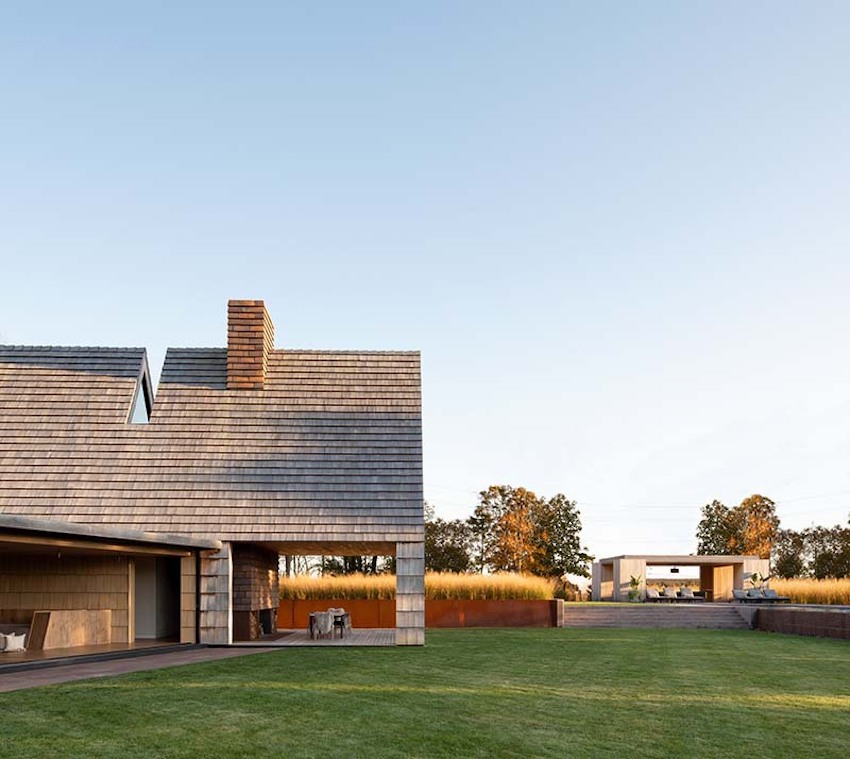Record Houses Live!
Learning Objectives:
- Discuss how the projects presented have used local, natural materials as a means of connecting to their sites and providing the houses with a strong sense of craft.
- For each project, describe the designer’s approach to detailing the intersections of various materials and connections between structural and architectural elements.
- Explain how each house has been sited and configured to optimize daylighting and ventilation and to capture views.
- Discuss how the projects presented have reinterpreted vernacular and modern typologies.
Credits:
This course is approved as a Structured Course
This course can be self-reported to the AANB, as per their CE Guidelines
Approved for structured learning
Approved for Core Learning
This course can be self-reported to the NLAA
Course may qualify for Learning Hours with NWTAA
Course eligible for OAA Learning Hours
This course is approved as a core course
This course can be self-reported for Learning Units to the Architectural Institute of British Columbia
Architectural Record’s annual Houses issue has been the premier showcase for residential architecture for decades, each year reflecting the best in inventive contemporary design. For the second year in a row, Record Houses will be live: see and hear from the architects of 2022’s award-winning houses, from the April issue of the magazine and online, as they explore how to integrate residences into natural surroundings and strategize methods of sustainability and resilience.
This webinar will focus on the importance of including local natural elements into the built environment to improve the overall sustainable design of the project and occupant well-being. In addition to sourcing local materials to reduce energy use in manufacturing and transportation, this webinar will focus on how the inclusion of natural lighting can be used to maintain or improve the emotional condition of occupants, while reducing heat and lighting costs and lowering the buildings overall carbon footprint.


|
Thom Mayne, founded Morphosis Architects as an interdisciplinary and collective practice involved in experimental design and research in 1972. Mayne’s distinguished honors include the Pritzker Prize (2005) and the American Institute of Architects Gold Medal (2013). He was appointed to the President’s Committee on the Arts and Humanities 2009‒2016 Throughout his career, Mayne has remained active in the academic world. In 1972, he was one of the seven founders of SCI-Arc, the Southern California Institute of Architecture, in Los Angeles. Since then, he has held teaching positions at Columbia, Yale, the Harvard Graduate School of Design, the Bartlett School of Architecture in London, the University of Pennsylvania, and many other institutions around the world. Mayne was a Distinguished Professor at UCLA Architecture and Urban Design from 1993‒2018. |

|
Casper Mork-Ulnes, AIA, MNAL, NCARB, is the founder of the international practice Mork Ulnes Architects. With offices in San Francisco and Oslo, Mork Ulnes Architects has been the recipient of numerous national and international awards. Casper is an Alumni of CCA (B.Arch) and Columbia (M.S.A.A.D). |

|
Sebastian Schmaling, AIA, LEED AP, is a founding partner of Johnsen Schmaling Architects and the Fitzhugh Scott Distinguished Professor in Practice at the University of Wisconsin. Informed by innovative tectonic and material experimentations, Johnsen Schmaling is widely recognized as a distinct voice in work contemporary architecture, praised for its conceptual eloquence, formal precision, and profound simplicity. The firm’s critically acclaimed work has garnered over 100 professional design awards here and abroad and is the subject of the monograph Johnsen Schmaling: On Rigor, published this spring by ORO Editions. Schmaling grew up in Berlin and holds degrees from the Technical University Berlin, the University of University of Wisconsin, and Harvard University. |

















